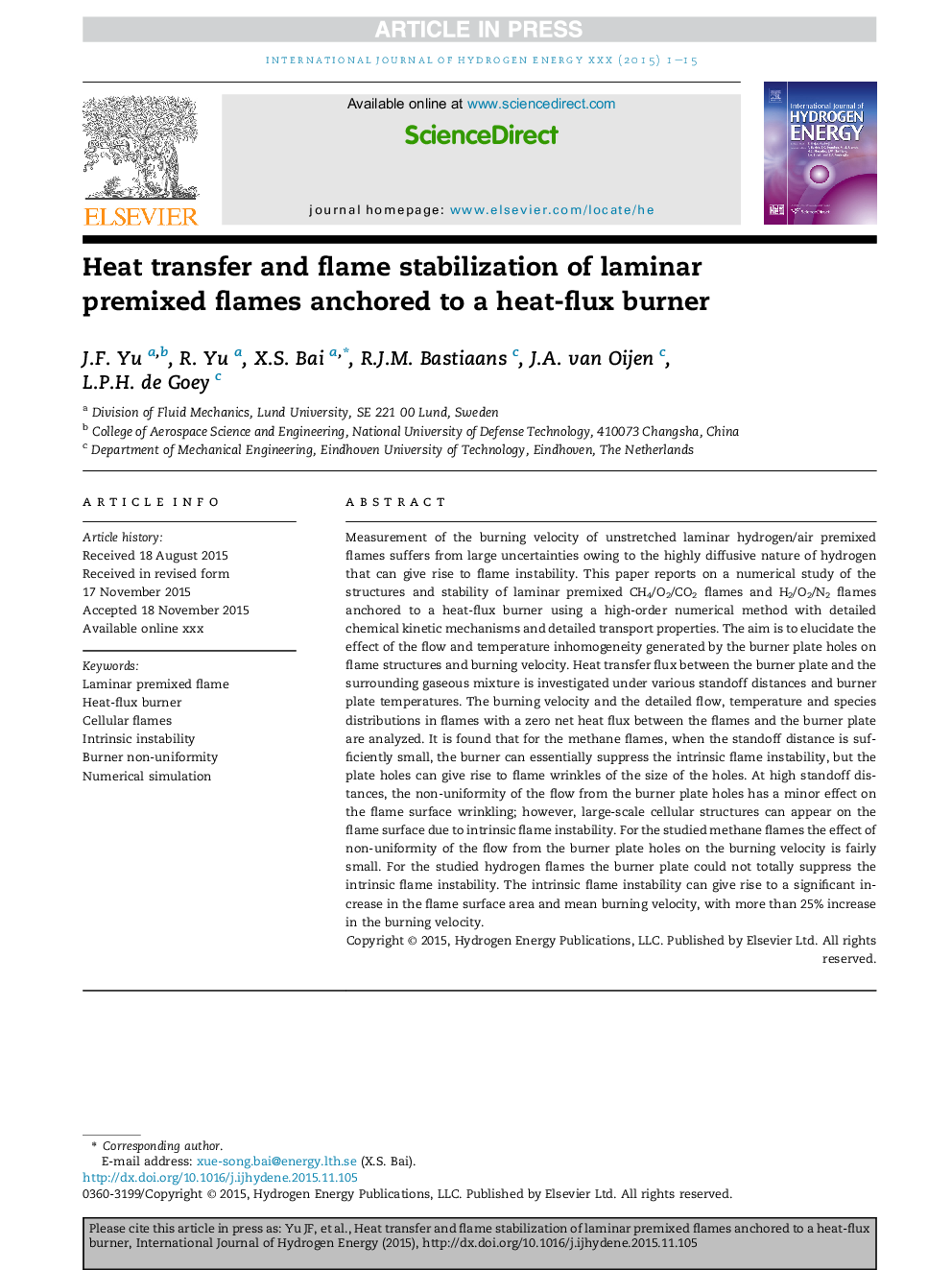| کد مقاله | کد نشریه | سال انتشار | مقاله انگلیسی | نسخه تمام متن |
|---|---|---|---|---|
| 7712584 | 1497422 | 2016 | 15 صفحه PDF | دانلود رایگان |
عنوان انگلیسی مقاله ISI
Heat transfer and flame stabilization of laminar premixed flames anchored to a heat-flux burner
ترجمه فارسی عنوان
انتقال حرارت و تثبیت شعله از شعله های پیش ساخته مخلوط شده به یک شار حرارتی متصل است
دانلود مقاله + سفارش ترجمه
دانلود مقاله ISI انگلیسی
رایگان برای ایرانیان
کلمات کلیدی
شعله پیش ساخته لامینر، شار حرارت شارژ، شعله های سلولی، بی ثباتی ذاتی، یکنواختی مشعل، شبیه سازی عددی،
موضوعات مرتبط
مهندسی و علوم پایه
شیمی
الکتروشیمی
چکیده انگلیسی
Measurement of the burning velocity of unstretched laminar hydrogen/air premixed flames suffers from large uncertainties owing to the highly diffusive nature of hydrogen that can give rise to flame instability. This paper reports on a numerical study of the structures and stability of laminar premixed CH4/O2/CO2 flames and H2/O2/N2 flames anchored to a heat-flux burner using a high-order numerical method with detailed chemical kinetic mechanisms and detailed transport properties. The aim is to elucidate the effect of the flow and temperature inhomogeneity generated by the burner plate holes on flame structures and burning velocity. Heat transfer flux between the burner plate and the surrounding gaseous mixture is investigated under various standoff distances and burner plate temperatures. The burning velocity and the detailed flow, temperature and species distributions in flames with a zero net heat flux between the flames and the burner plate are analyzed. It is found that for the methane flames, when the standoff distance is sufficiently small, the burner can essentially suppress the intrinsic flame instability, but the plate holes can give rise to flame wrinkles of the size of the holes. At high standoff distances, the non-uniformity of the flow from the burner plate holes has a minor effect on the flame surface wrinkling; however, large-scale cellular structures can appear on the flame surface due to intrinsic flame instability. For the studied methane flames the effect of non-uniformity of the flow from the burner plate holes on the burning velocity is fairly small. For the studied hydrogen flames the burner plate could not totally suppress the intrinsic flame instability. The intrinsic flame instability can give rise to a significant increase in the flame surface area and mean burning velocity, with more than 25% increase in the burning velocity.
ناشر
Database: Elsevier - ScienceDirect (ساینس دایرکت)
Journal: International Journal of Hydrogen Energy - Volume 41, Issue 3, 21 January 2016, Pages 2037-2051
Journal: International Journal of Hydrogen Energy - Volume 41, Issue 3, 21 January 2016, Pages 2037-2051
نویسندگان
J.F. Yu, R. Yu, X.S. Bai, R.J.M. Bastiaans, J.A. van Oijen, L.P.H. de Goey,
